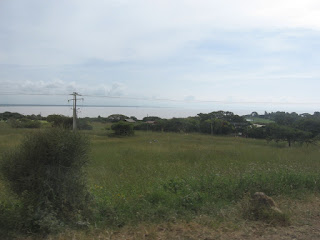Gorgora (Amharic: ጎርጎራ Gōrgōrā, also, especially formerly, ጐርጐራ Gʷargʷarā, modern pronunciation Gʷergʷerā) is a town and peninsula in northwestern Ethiopia. It is located south of Gondar on the north shore of Lake Tana, in the Semien Gondar Zone of the Amhara Region.
Gorgora served as one of the early capitals of Ethiopia during the reigns of Emperor Susenyos I and his son Fasilides before Fasilides founded Gondar. It was selected as a capital as it started with the letter "gʷa" (Ge'ez: ጐ), as dictated by a prophecy of the time (the same prophecy led to the rise of Gondar). Gorgora is the Ethiopic bastardization of the Greek name "Γρηγόριος" (Gregorios). The city is named after the 4th-century Saint and Church Father Gregory the Illuminator, who is a prominent figure in Ethiopian Orthodox Theology.
Ruins of the structures the Jesuits built can still be seen, although most of the buildings fell following an earthquake in the 1950s. Their construction is credited to the missionary Pedro Paez, who also succeeded in converting Emperor Susenyos to Catholicism. The town is known for the Debre Sina church (built in 1608), its many monasteries, the palace of the Emperor Susenyos located nearby, and the Portuguese cathedral that was abandoned after Emperor Fasilides expelled the Jesuits.
Source: Gorgora - Wikipedia





































































